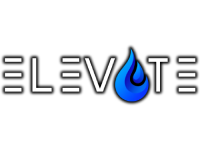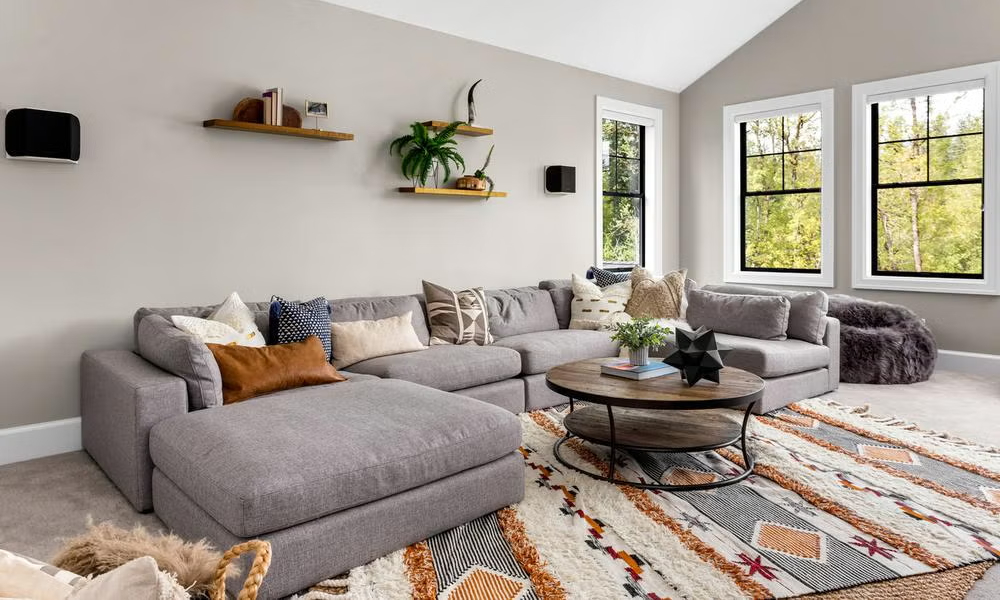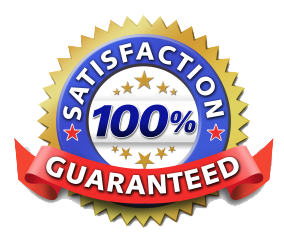Professional area rug cleaning techniques combine advanced methods, specialized equipment, and certified expertise to restore vibrancy, extend fiber life, and improve home health. Neglected rugs can harbor allergens and bacteria, compromising indoor air quality and accelerating wear. In this guide, you’ll discover why professional area rug cleaning delivers superior results, explore masterful cleaning processes from inspection to grooming, learn how techniques adapt to rug fibers, understand eco-friendly approaches, compare cost factors, troubleshoot common problems, and clarify key concerns—all to help you achieve a fresh, lasting look through expert service from Elevate Cleaning ID.
Why Choose Professional Area Rug Cleaning for a Fresh Look?
Professional area rug cleaning offers a level of thoroughness, precision, and care that DIY methods cannot match, ensuring brighter colors, restored pile height, and a healthier home environment.
How Does Professional Cleaning Improve Indoor Air Quality?
Professional cleaning removes embedded allergens, dust mites, and bacteria by deep-immersion washing and high-efficiency extraction, reducing airborne irritants and promoting respiratory comfort. Technicians target trapped debris at the root of fibers, flushing out contaminants that vacuuming alone leaves behind. Eliminating these particles not only revitalizes rug appearance but also supports clearer air, which leads us to how expert methods preserve rug integrity over time.
The Importance of Professional Cleaning for Indoor Air Quality
Professional area rug cleaning effectively removes allergens, dust mites, and bacteria through deep-immersion washing and high-efficiency extraction. This process reduces airborne irritants, promoting respiratory comfort and a healthier home environment. Eliminating these particles revitalizes the rug’s appearance and supports clearer air quality.
Environmental Protection Agency (EPA), “Indoor Air Quality” (2023)
This research supports the article’s claims about the benefits of professional cleaning on indoor air quality.
How Does Professional Cleaning Prolong Rug Life and Preserve Beauty?
Professional treatments protect fibers by using pH-balanced detergents and controlled agitation, preventing color fading and fiber weakening. By extracting abrasive grit before it abrades strands, technicians maintain pile density and elasticity. This extends the rug’s service life and preserves its decorative impact.
What Are the Best Methods for Effective Stain and Odor Removal?
Targeted stain and odor extraction employs enzymatic cleaners for organic spills, oxidizing agents for tannin-based marks, and deodorizing encapsulants to neutralize odors at a molecular level. This comprehensive approach ensures removal of pet accidents, food stains, and lingering smells without residue buildup.
Methods for Effective Stain and Odor Removal
Targeted stain and odor extraction employs specialized cleaning agents to remove various types of stains and odors. Enzymatic cleaners are used for organic spills, oxidizing agents for tannin-based marks, and deodorizing encapsulants to neutralize odors at a molecular level. This comprehensive approach ensures the removal of pet accidents, food stains, and lingering smells without residue buildup.
American Cleaning Institute, “Cleaning Solutions for Common Stains” (2023)
This citation provides further details on the specific methods used by professionals to remove stains and odors.
How Does Professional Expertise Save You Time and Ensure Quality?
Certified technicians use specialized tools—truck-mounted hot water extractors, precision hand-washing stations, and low-moisture spray systems—to handle each cleaning phase efficiently. Their training and equipment convert what can be an all-day DIY task into a seamless service, delivering consistent, high-quality results while you focus on other priorities.
What Are the Masterful Area Rug Cleaning Techniques Used by Experts?
Experts follow a structured process that blends inspection, staged cleaning, targeted treatments, and finishing touches to achieve optimal freshness and longevity.
How Is Initial Inspection and Rug Type Identification Performed?
Technicians begin with a systematic examination of rug construction, material, and condition, noting fiber type (wool, silk, synthetic), weave density, and any signs of wear or damage. Identifying dyes, fringe attachment, and backing informs the choice of cleaning agents and mechanical action needed to protect delicate fibers.
What Are the Steps for Deep Dusting and Soil Removal?
Before any wet cleaning, professionals perform a multi-stage dusting sequence:
- Low-speed agitation lifts dry soil from the foundation.
- High-capacity vacuum extracts loosened particles.
- Beating or shaking further dislodges grit from pile interstices.
Completing this stage prevents dry soil from forming mud during wash cycles and primes the rug for thorough washing.
How Do Specialized Washing Methods Work: Hot Water Extraction, Hand Washing, and Low-Moisture Cleaning?
Professionals select the washing method based on rug type and soil level:
| Cleaning Method | Technique | Key Benefit |
|---|---|---|
| Hot Water Extraction | High-pressure spray & suction | Penetrates foundation to remove deep fixtures |
| Hand Washing | Gentle immersion & brushing | Protects delicate fibers and natural dyes |
| Low-Moisture Cleaning | Encapsulation foam spray | Quick-dry option ideal for moisture-sensitive rugs |
Each method targets stubborn soil and stains while maintaining fiber integrity, leading to a fresh appearance and rapid turnaround.
How Are Stain and Odor Treatments Applied Professionally?
After washing, technicians apply spot treatments with industry-grade enzymatic and oxidizing solutions, using low-velocity sprayers or soft brushes to drive agents into stain zones. Dwell time and agitation are calibrated to break down residues without harming the rug’s texture or color.
What Is the Importance of Thorough Rinsing and Controlled Drying?
Complete rinsing flushes away cleaning agents, preventing sticky residues that attract new soil. Controlled drying—often with air movers and dehumidifiers—eliminates excess moisture, averting mold risk and structural distortion. Balanced humidity and temperature during drying preserve pile uniformity.
How Is Final Inspection and Rug Grooming Conducted?
A post-cleaning quality check ensures even color restoration, fiber alignment, and the absence of moisture pockets. Technicians trim stray fibers, re-establish pile direction with rakes, and reinstall protective padding if needed. This final grooming reinstates the rug’s design clarity and tactile comfort.
How Do Cleaning Techniques Vary for Different Types of Area Rugs?
Cleaning Techniques Vary for Different Types of Area Rugs
Cleaning approaches are adapted to unique fiber characteristics, weave density, and dye stability, ensuring optimal care for every rug variety. Oriental and Persian rugs require hand washing with mild, pH-neutral detergents and gentle agitation to protect vegetable dyes. Wool and cotton rugs respond best to hot water extraction with wool-safe surfactants and prompt drying to avoid shrinkage.
The Carpet and Rug Institute, “Cleaning and Maintenance Guidelines” (2023)
This research supports the article’s claims about the importance of adapting cleaning methods to different rug types.
What Are the Best Practices for Oriental and Persian Rug Cleaning?
Oriental and Persian rugs require hand washing with mild, pH-neutral detergents and gentle agitation to protect vegetable dyes. Low-pressure immersion prevents dye bleeding while preserving intricate patterns and fringe integrity.
How Should Wool and Natural Fiber Rugs Be Cleaned and Maintained?
Wool and cotton rugs respond best to hot water extraction with wool-safe surfactants and prompt drying to avoid shrinkage. Jute and sisal benefit from low-moisture encapsulation to prevent fiber swelling and distortion.
What Are Effective Cleaning Methods for Synthetic and Modern Rugs?
Durable nylon and polyester rugs tolerate high-pressure hot water extraction and stronger detergent concentrations, making them ideal candidates for deep-clean cycles that eliminate embedded debris and restore pile loft.
How Does Fiber Type Influence Cleaning Product and Technique Selection?
Natural fibers demand enzyme-free, gentle formulas to avoid fiber breakdown, whereas synthetic rugs accommodate stronger surfactants and more aggressive extraction. Matching chemistry and mechanical action to material properties ensures both cleanliness and longevity.
How Does Eco-Friendly Rug Cleaning Benefit Your Home and the Environment?
Eco-friendly rug cleaning uses biodegradable solutions and water-saving methods that safeguard health and reduce environmental impact without compromising cleanliness. What Makes Eco-Friendly Cleaning Safe for Families and Pets?
Non-toxic, plant-based detergents and encapsulating polymers rinse cleanly without harmful residues, eliminating skin-irritant risks for children and respiratory triggers for pets while still providing deep soil removal.
How Do Environmentally Responsible Practices Enhance Sustainability?
Water reclamation systems and energy-efficient equipment minimize resource consumption, and Green Seal–certified products break down naturally, reducing chemical runoff and supporting a healthier ecosystem.
Is Eco-Friendly Rug Cleaning as Effective as Traditional Methods?
Yes, modern green cleaners leverage advanced surfactants and foam-encapsulation technology to match the soil-lift and stain-removal performance of conventional detergents, delivering comparable results with enhanced safety and sustainability.
What Factors Influence the Cost of Professional Area Rug Cleaning?
Pricing reflects variables such as rug dimensions, material composition, soil level, and chosen cleaning method, balanced against the quality and guarantees offered.
How Do Rug Size, Material, and Condition Affect Cleaning Prices?
Larger rugs require more labor, chemicals, and machine time. Delicate fibers and extensive damage necessitate specialized handling and pre-treatments, increasing service complexity and cost.
What Are the Typical Price Ranges for Different Cleaning Methods?
- Hot Water Extraction: $1.50–$4.00 per sq. ft.
- Hand Washing: $3.00–$8.00 per sq. ft.
- Low-Moisture Cleaning: $1.00–$2.50 per sq. ft.
These ranges vary regionally and by service inclusion, such as pickup, drop-off, and padding replacement.
How Can You Get a Free and Transparent Rug Cleaning Estimate?
Contact Elevate Cleaning ID through their website or by phone to schedule an on-site assessment or submit rug dimensions and images online. You’ll receive a detailed quote outlining method, timeline, and any pre-treatment needs.
What Are the Most Common Area Rug Problems and How Are They Solved?
Persistent stains, odors, and microbial growth require targeted solutions to restore rug integrity and appearance.
How Can You Effectively Remove Pet Stains and Odors from Rugs?
Professionals apply enzyme-based pretreatments to break down uric acid and protein residues, followed by hot water extraction and odor-neutralizing encapsulants to lock in freshness.
What Are the Best Methods for Red Wine and Other Tough Stain Removal?
Red wine stains respond to oxygen-based bleaches or reducing agents applied under controlled agitation, lifting tannins without bleaching dyes. Solvent-based spotters handle grease and oil-based marks with precision.
How Is Mold and Mildew Removed Safely from Area Rugs?
Technicians use antifungal sprays and UV-aided drying to eliminate spores, then apply pH-balanced rinses to restore fiber pH and inhibit regrowth, ensuring a clean, mold-free rug.
What Are the Frequently Asked Questions About Area Rug Cleaning?
Customers often seek clarity on maintenance intervals, safe methods, DIY limitations, and care for heirloom pieces when considering professional services.
How Often Should You Professionally Clean Your Area Rugs?
Experts recommend deep cleaning every 12–18 months, with high-traffic or pet households scheduling cleanings every 6–12 months to maintain appearance and hygiene.
Can You Steam Clean Area Rugs Safely?
Yes, steam cleaning with low-moisture extraction tools is safe for most synthetic and wool rugs, provided temperatures and moisture levels are controlled to prevent shrinkage and dye bleeding.
What Are the Best DIY Rug Cleaning Tips and When to Call Professionals?
For light maintenance, vacuum regularly and spot-treat spills immediately with mild detergent. Call professionals when stains penetrate deeply, odors persist, or delicate fibers require specialized care.
How Do Professionals Handle Delicate or Antique Rugs?
Certified technicians perform minimal-moisture surface cleaning or gentle hand washing using custom formulas, preserving delicate dyes and fibers while stabilizing fringe and foundation to prevent damage.
Cleaning area rugs with professional-grade methods transforms home aesthetics, bolsters indoor air quality, and extends your investment in floor coverings. By following expert techniques—from inspection and deep dusting to eco-friendly finishes—you ensure exceptional results tailored to each rug’s unique requirements. Ready to experience a fresh, healthy living space? Schedule your professional area rug cleaning with Elevate Cleaning ID in Idaho Falls today and rediscover the beauty beneath your feet.






